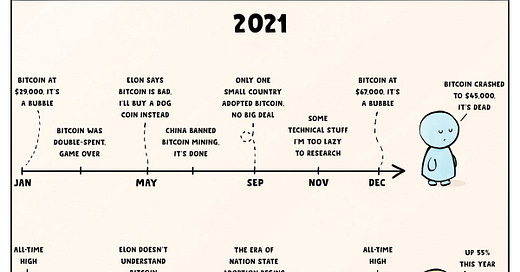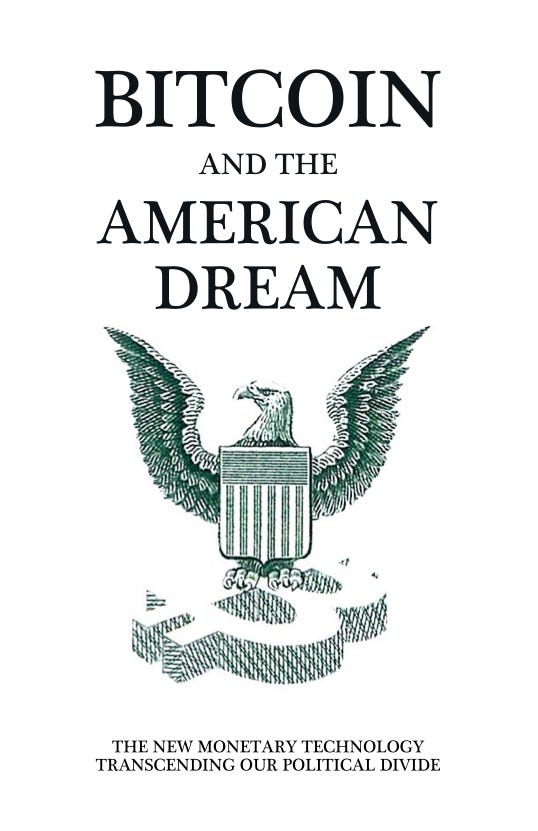The internet runs on ads. This isn’t an exaggeration. The biggest companies in the world profit not by creating useful goods for users, but selling users to advertisers. Google, Facebook and to some degree, Apple, Microsoft and Amazon all are in the ad business. Back in the 80’s and 90’s, TV was the dominant form of advertising. Companies were said to have made it when they could run an ad on prime time TV. This changed in the 00’s and 10’s when digital ads became a bigger thing, particularly with micro-targeting which Google and Facebook pioneered.
Further, there came to be a whole ecosystem of affiliate sites, where a click through to a purchase would result in a kickback. A shockingly large amount of web content is now funded through affiliate links. That is, through some sort of kickback for the products sold to their users, not by the users benefiting from the content. That, too, is a form of advertising. Ads are no small business. It’s literally billions of dollars and the people that optimize ads make lots of money essentially selling user data to companies that want to sell to them.
This may seem very capitalistic and in a sense, good. Here’s the problem: the incentives are completely out of whack.
Most of the content on the web is funded by affiliate marketing, so they’re rarely critical of products that they’re getting kickbacks from. And if a topic has no easy path to monetization (that is, selling something), it really doesn’t get explored that much, or get much space on a typical website. Everything is geared toward not just getting your attention to view the ad, but to also get you to click through and buy the product that the ad promotes.
Among other things, this means that all popular content gets copied to oblivion. After all, if a particular piece of content drives a lot of views or affiliate kickbacks, then copying it should drive just as much traffic, ad revenue and affiliate dollars. Hence content on the web is just not that original or interesting. If it is, it gets copied mercilessly until it’s no longer original or interesting.
There’s also a huge incentive to produce an especially large volume of content. The content doesn’t have to be good, but just good enough to get people to click. That is, the content has to be good enough for people to get addicted. Thus, journalism is geared toward stories that can be written or produced fast rather than stories that are true or useful. These days, many stories can be written completely by computer, removing even the little bit of human involvement from the equation.
Finally, because clicks count so much, most content tends to be on platforms controlled by a big company. They have rules which unfortunately subject content creators to political pressure since these platforms are centralized. Hence, the content tends to please those in power. This is much more obvious in authoritarian countries like China, but it’s also becoming more prevalent in the west, with YouTube, Facebook and Twitter censoring what they consider politically risky, even if the content would be popular. These platforms become the referees and get to pick winners and losers, in much the same way government policy does. In a very real way, these companies are an arm of government.
The good news is that new models are emerging. People are getting funded directly and more people are using email and other decentralized means to distribute their content. Indeed, the best content tends to not be on controlled platforms, but in newsletters published by a single person. We’re strangely going back to the initial days of the web when content creators and their audiences would get to communicate directly.
And that direct communication is a lot closer to how humans have interacted over thousands of years. The one way broadcast model is a 20th century phenomenon and the internet started to bring back the direct communication. Unfortunately, the last 20 years have swung the pendulum back and we’re just now beginning to make content more decentralized again.
The good news is that we have the tools this time to make the decentralization stick. Instead of ads, we have the means to do micropayments and fund content producers directly with Bitcoin. This is ultimately what will save the web.
Bitcoin
Martin Habovštiak proposes reusable Taproot addresses. The idea is much like BIP47, which allows sending to the same person using different addresses, but the addresses are deterministic and able to be calculated by both sender and receiver. This gives a significant amount of privacy as addresses are only known by the sender/receiver and each pairing gets its own space of addresses. This way, the sender/receiver don’t need to interact for each transaction, making payment private and fast. The main difference with BIP47 is that it’s using Taproot to create new addresses for unlocking.
Porter from Unchained explains how to replace or upgrade hardware wallets. This is not a subject often talked about, but when a hardware device fails or is compromised, the procedures for recovery are not trivial. The post goes through what you should do and how you should do it if you have something that’s compromised. Worth reading to be prepared, particularly in terms of having hardware on hand to remedy the situation.
The Bitcoin Machine is a hardware device by Umbrel for running your own Lightning and Bitcoin node. The device is hardly anything new, but the nice innovation on this device is that it has a faceplate that displays the Bitcoin price and other data, making it attractive enough to put in a prominent place in your home. Instead of, say, blockclock, you can run a full node at the same time, in other words. I expect every other manufacturer to follow this lead as it makes the device more physically functional.
Lightning
Lightning Jet is an automatic channel rebalancer for LND nodes. It’s lightning node management software and has a lot of nice features. Of particular note is that it has a telegram bot that can be installed, allowing you to be notified if something changes with your lightning setup (say, a peer changes their fee structure). I’m not sure I want to use telegram this way, but this is not a bad way to get notified. I would like to see something like this for my Bitcoin addresses, so I don’t have to run a separate application.
Dergigi explains what busking is and how it’s a new model without ads that is coming on the internet. Busking is the pay model where the content is provided for free and people contribute as desired. Think street performer who has a hat or guitar case out for tips. Doing this in a digital way with Lightning is what he thinks the next evolution of content provision. And not enough people willing to pay will result in the content no longer being produced. We’re already kinda there with Patreon and so on, but Lightning definitely takes it to another level as there’s no longer a trusted third party.
Alyssa Hertig summarizes Lightning’s progress this past year. As she points out, the improvements on Lightning have largely meant a better user experience, with less payments failing and more interesting applications being built on top. It’s hard to remember what LN was like in 2020, but I can attest to the fact that the lightning payment/acceptance experience has improved by leaps and bounds. Here’s to another year of significant improvement to come with Schnorr, Taproot and more!
Economics, Engineering, Etc.
I wrote an article for Faith Driven Investor, making the argument that Christians need to understand money a lot better. The essay is meant to challenge Christians to think about the system of money rather than Bitcoin as an asset. The moral and ethical reality of the monetary system is almost completely ignored by the investor class, and the idea in this piece is to inject that back for Christians, at least.
Lyn Alden shows why price inflation is a function of monetary expansion and not any of the other things the powers that be are charging. She has a lot of graphs which shows the correlation between commodity prices and monetary expansion rates. Her main charge is what Austrian economists have been saying for a while. Inflation is always a monetary phenomenon. It’s not some new form of human greed or some extraordinary event, but something caused by the central controllers of the currency. Send this article to your Keynesian friends and watch their heads explode if they haven’t already.
Fiatjaf has a new protocol for doing decentralized social networks called nostr. There’s already a beta site where you can use a BIP39 seed phrase to make an account. This is the decentralized internet that we’ve all been waiting for and it’s interestingly not bound to lightning but another network in of itself. I’ve been predicting that this is the direction that lightning would take, but the more I think about it, this model may very well offer some nice benefits since there’s no inherent need to keep the two networks the same. This is what should be called Web3, unfortunately, that term has been co-opted by VCs for something else.
Speaking of which, Jordi Alexander analyzes how ponzi schemes work and shows how altcoins run their con. The analysis here is refreshingly clear and starts from first principles, which any good analysis should start from. Web3, as he explains, is largely a ponzi, though there’s some hope for redemption put out in the end, such as gambling, memes, charity and ads. Personally, I don’t see any of those things as really a big value add, so even the best case scenario is not very good.
Stephan Livera reviews the year in Bitcoin and freedom. He points out the big news like El Salvador, mining movement, lightning adoption and Taproot, but also some more subtle things like developer funding becoming more diverse and privacy innovations in many wallets. The world has become more authoritarian and Bitcoin seems to be the one thing increasing our liberty.
The Giving Block has a recap of the $55M or so in BTC that Pineapple donated back in 2017. If you aren’t familiar, the fund was set up by an anonymous donor who wanted to give away most of his Bitcoin to charitable causes. There was a significant application process to make sure the causes weren’t scams, but the report shows that many of these entities benefited from the donations, some getting a nice kick to start their work.
Quick Hits
Senator Lummis is poised to introduce a digital asset bill.
Radio Shack is becoming a crypto exchange.
Bukele thinks more countries will make BTC legal tender.
Polygon, an ETH layer 2, had a big reorg.
This is what VC buzzwords devolve into.
Events
We will be having a launch party for Bitcoin and the American Dream in DC in early February, please stay tuned for that.
I am planning to be in London for Advancing Bitcoin March 3-4, but there is some possibility I won’t be able to get into the UK. I am also going to be at Bitcoin 2022 in Miami April 6-8.
I’ll also be doing the Programming Blockchain seminars in London March 1-2 (subject to being able to get into the UK) and Miami April 4-5.
Podcasts, Etc.
On this week’s Bitcoin Fixes This, I talked to Laser Hodl about the climate of fear that we’ve been in the last two years.
I read through last week’s newsletter which you can find here. I talked to Robert Breedlove in part 5 of our conversation, this one about epistemology and a priori knowledge. This one explains why Keynesianism is so prone to wishful thinking and the difference between arguing by propaganda versus rational thought.
Here is the latest book which is out now!
My other books are here and here.
Unchained Capital is a sponsor of this newsletter. I am an advisor and proud to be a part of a company that’s enhancing security for Bitcoin holders. If you need multisig, collaborative custody or bitcoin native financial services, learn more here.
Fiat delenda est.











love that folks are thinking about these important things anew... we are moving back to what i call a "webzero" movement; headed back to the original promise of the open and censorship-free web. i'm building communication tooling in this space. exciting times.